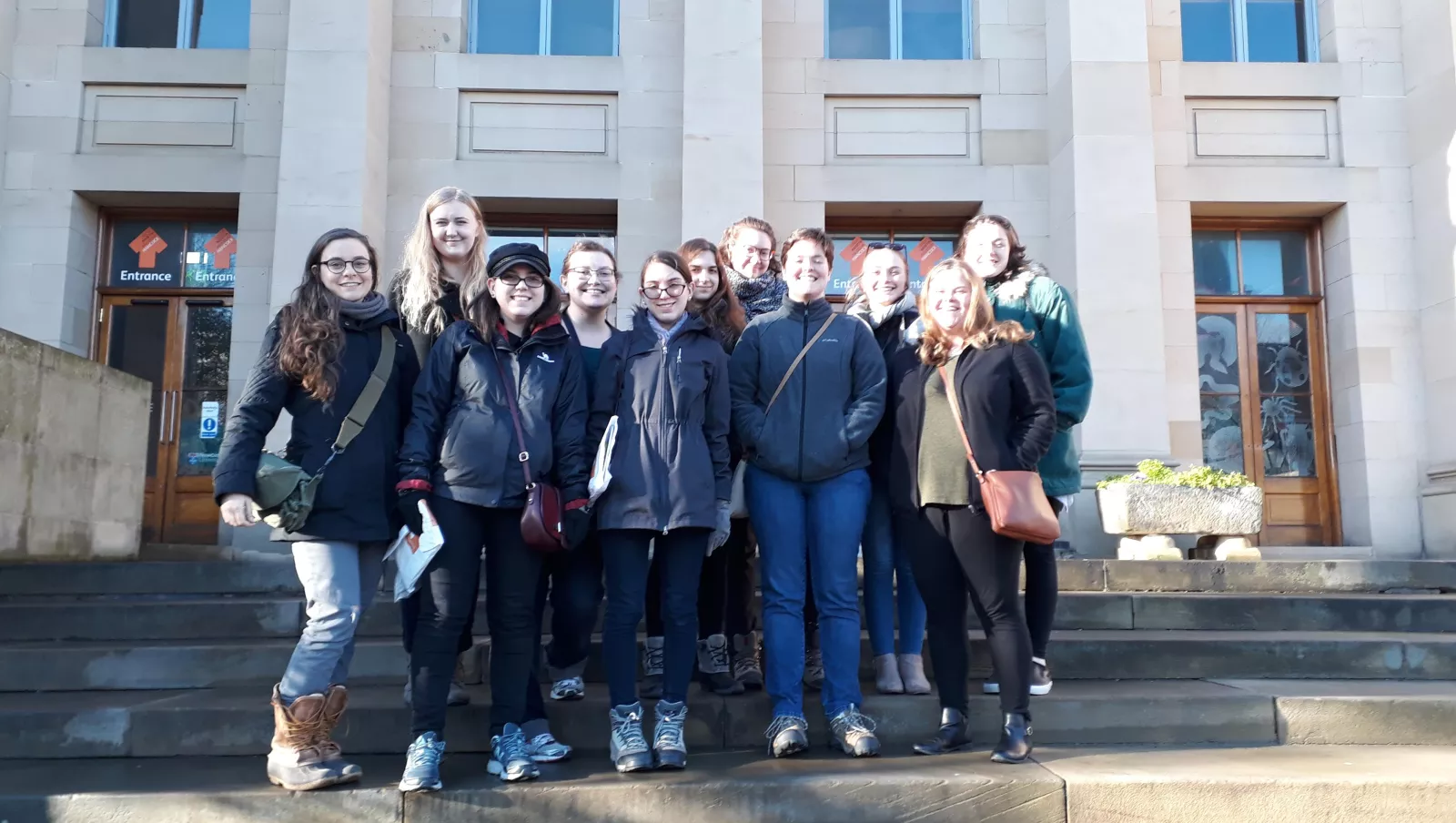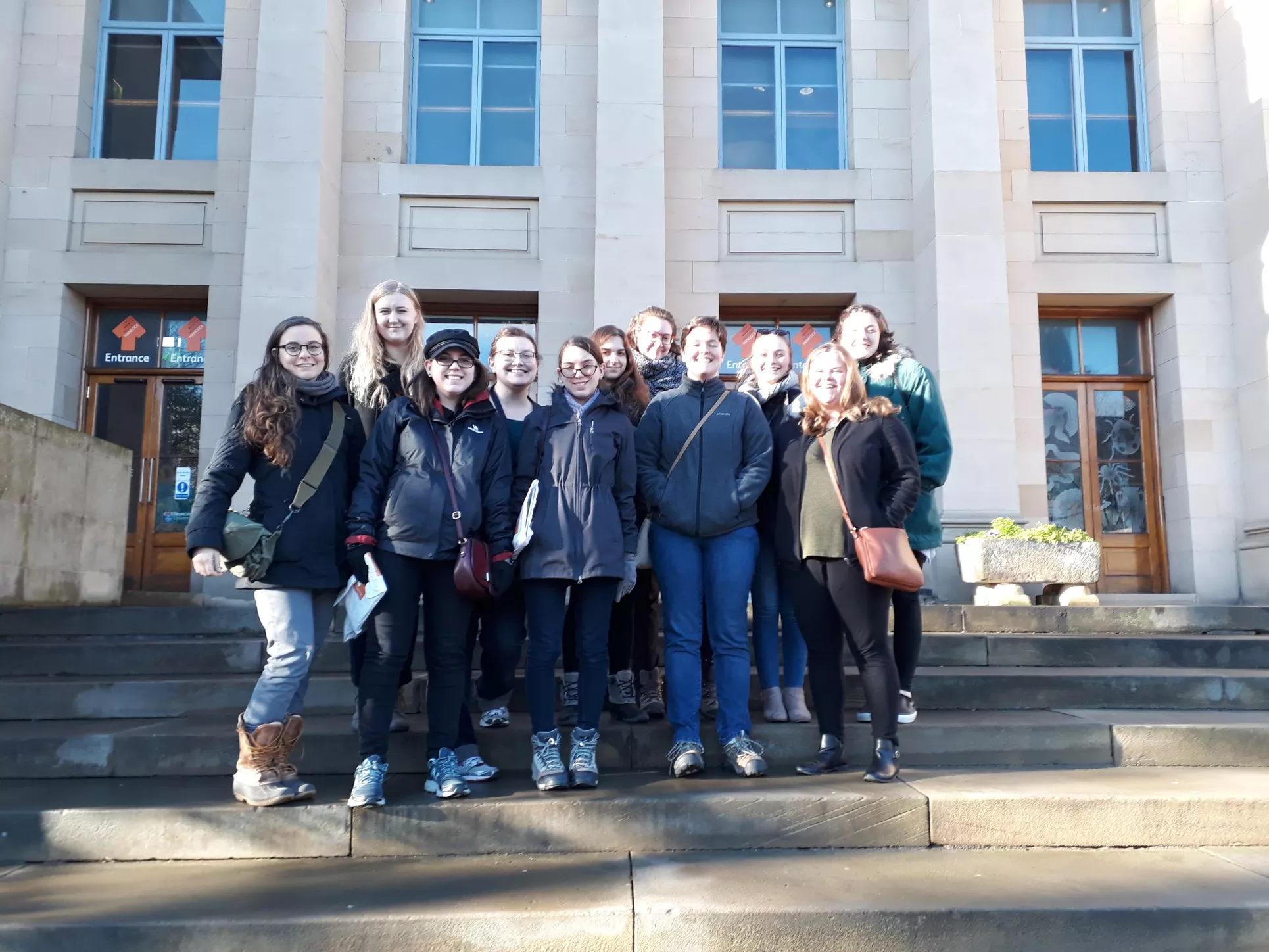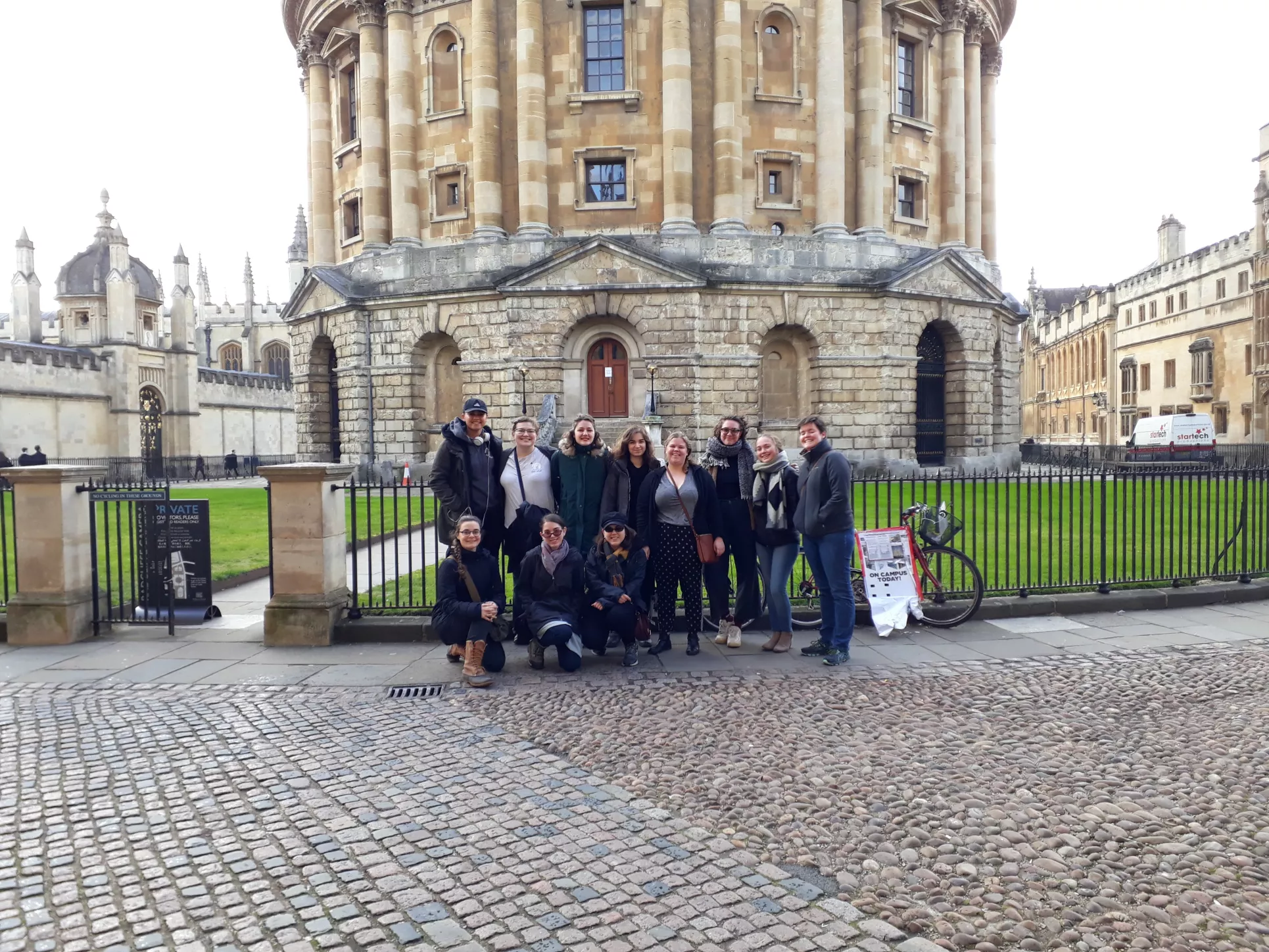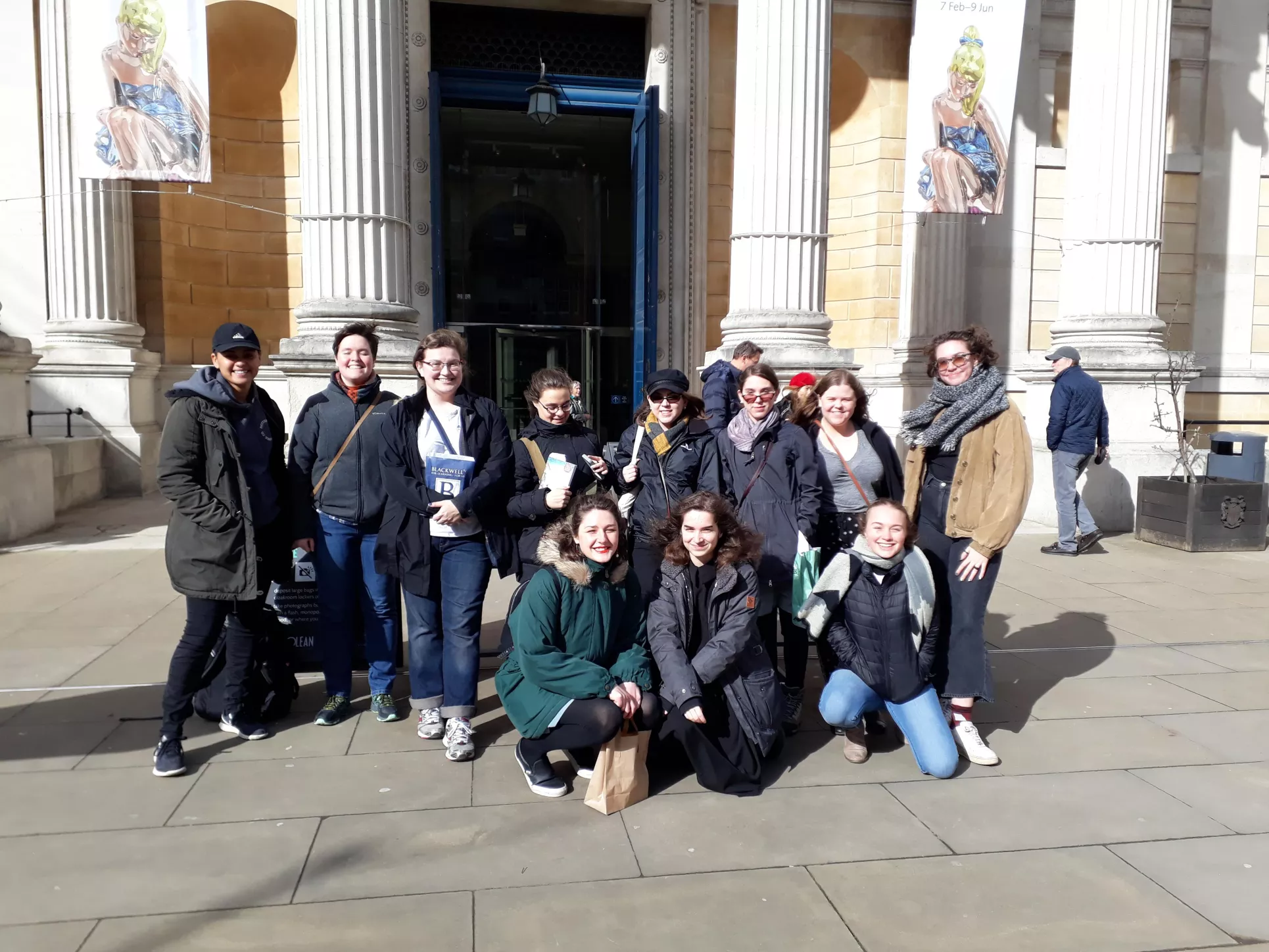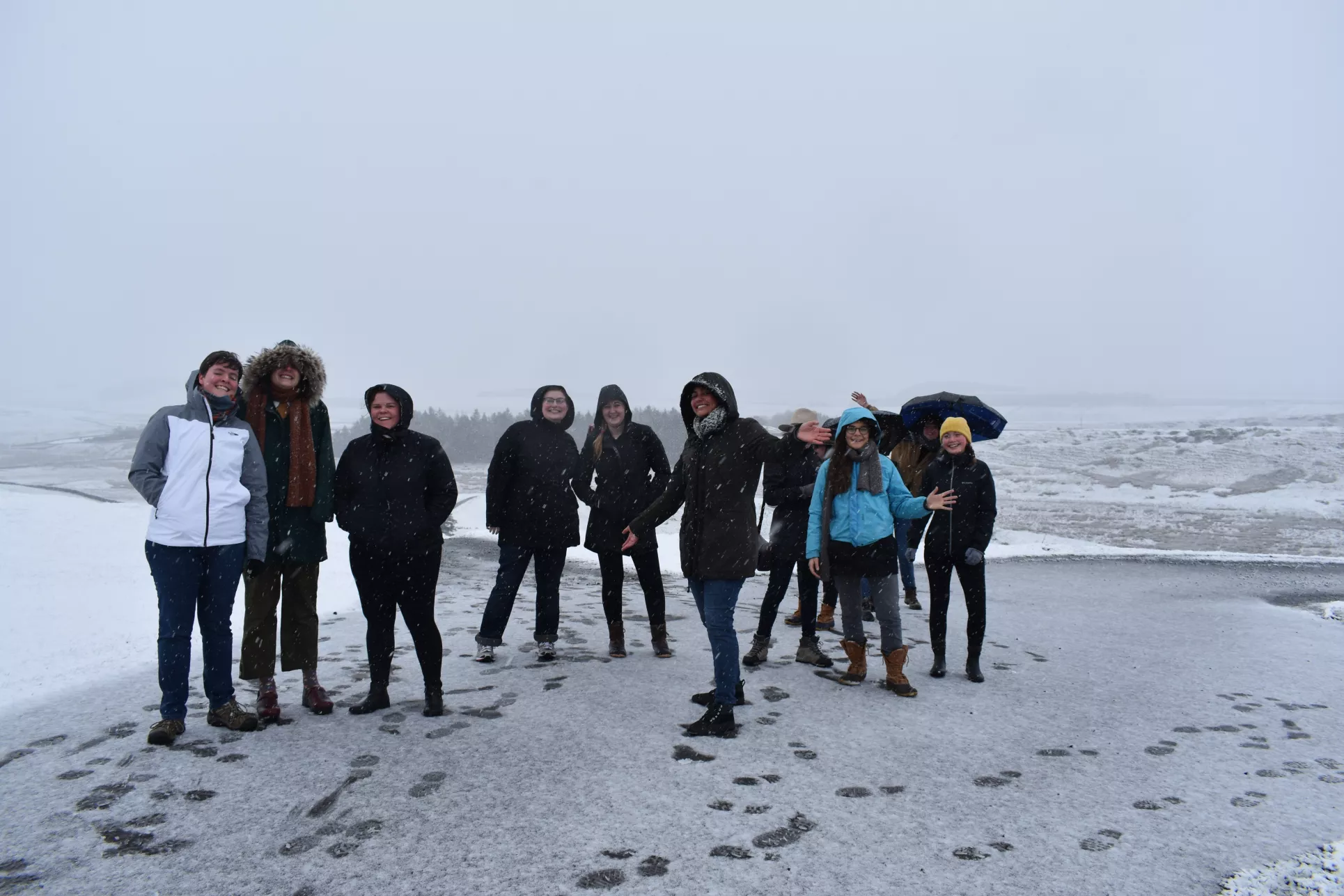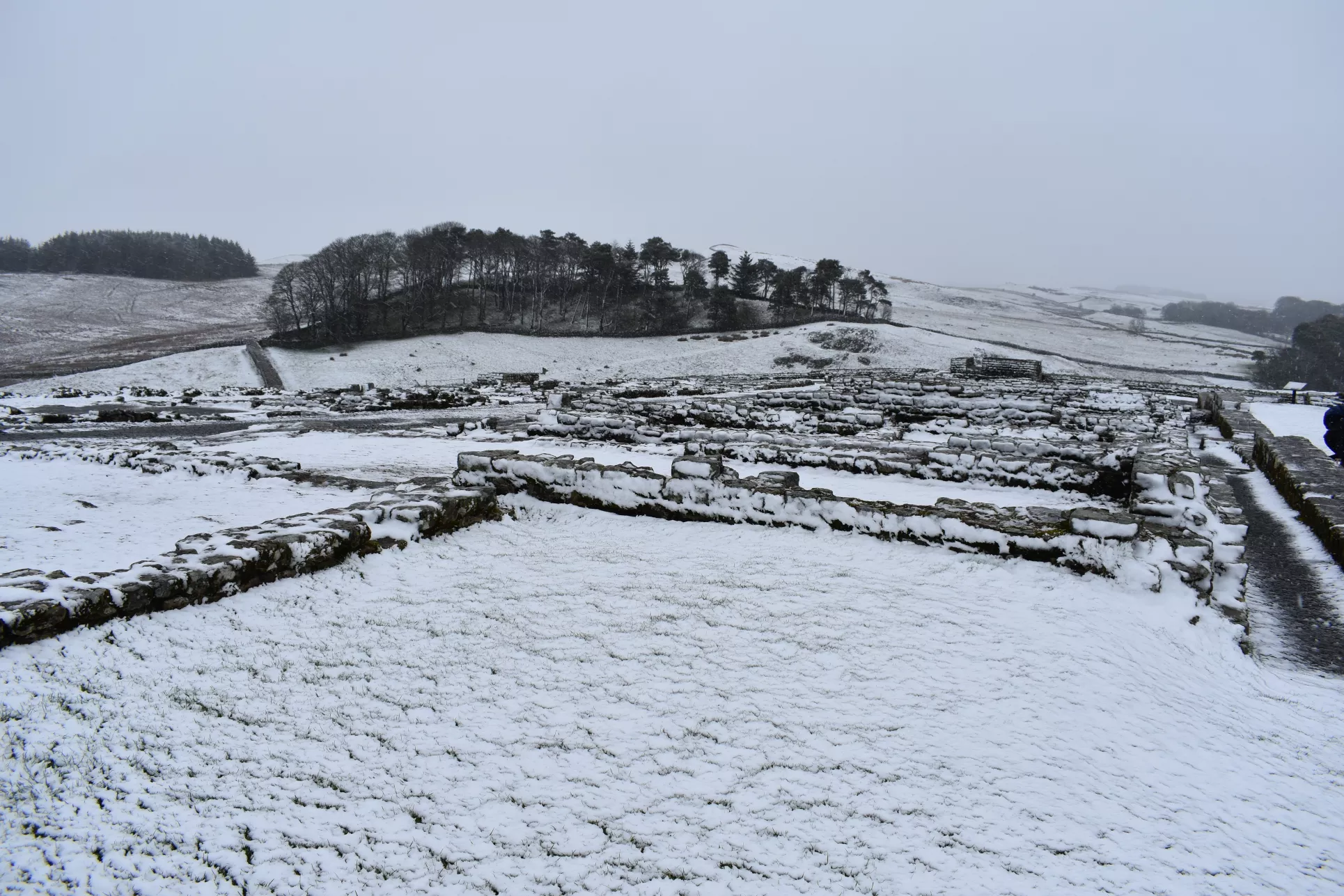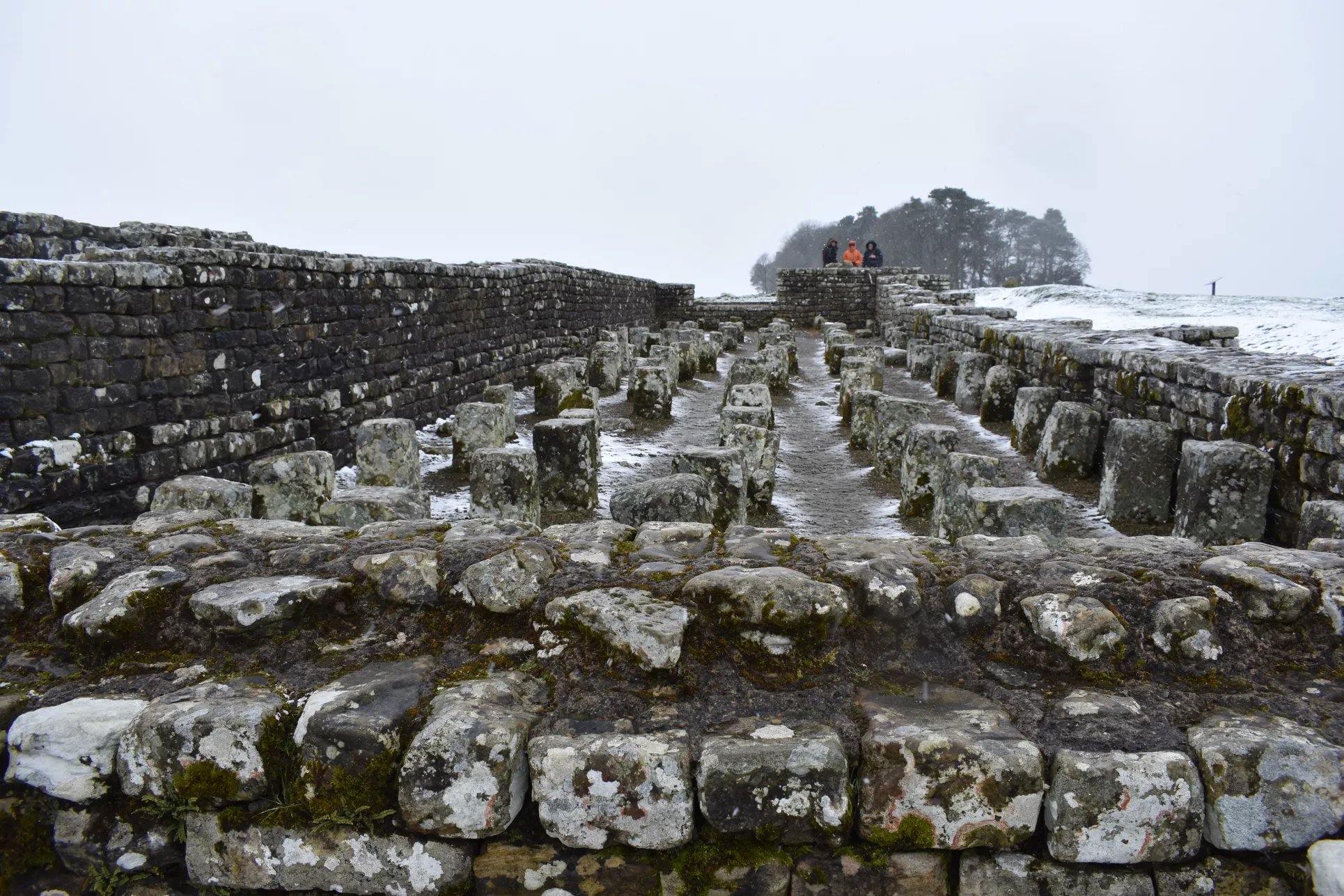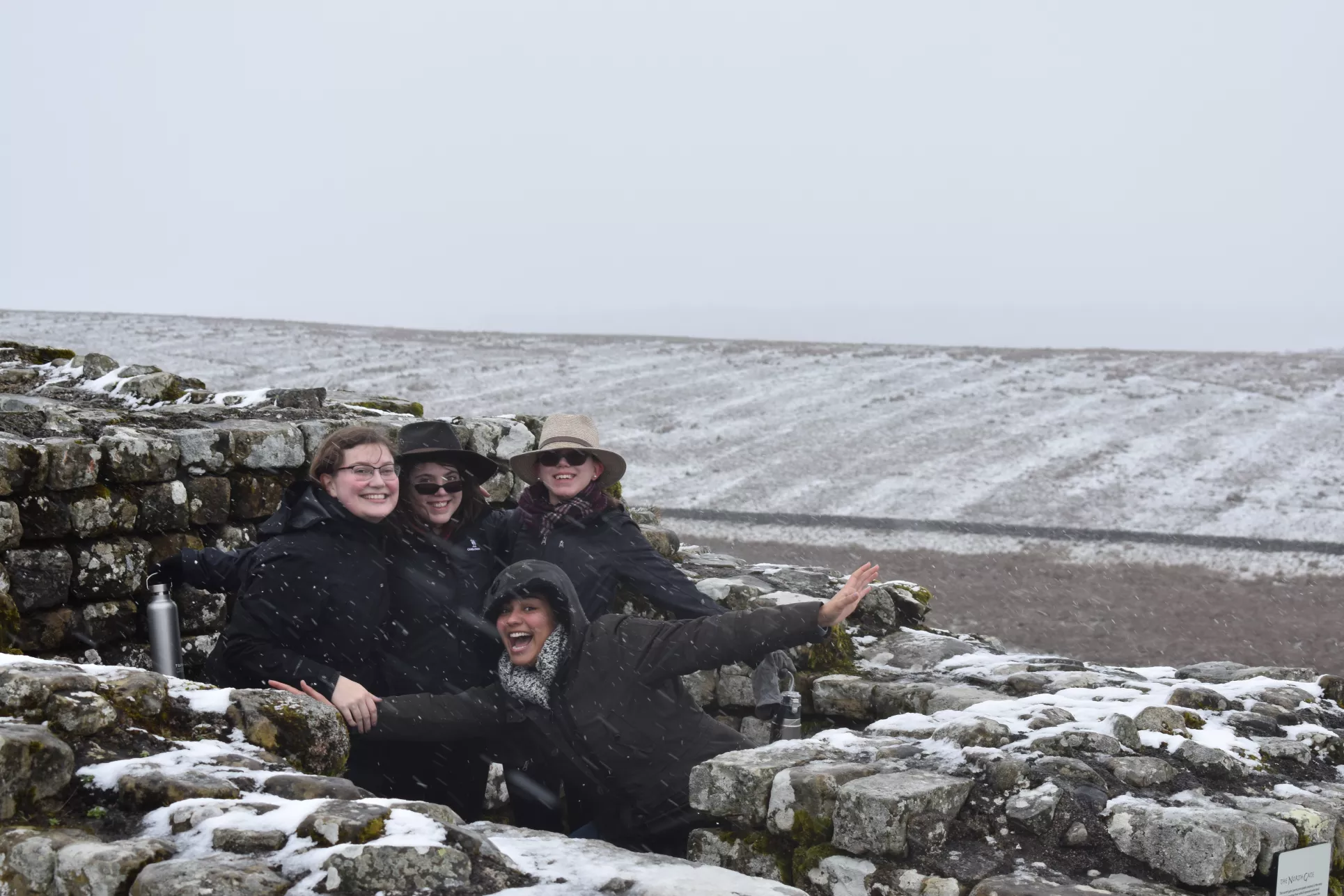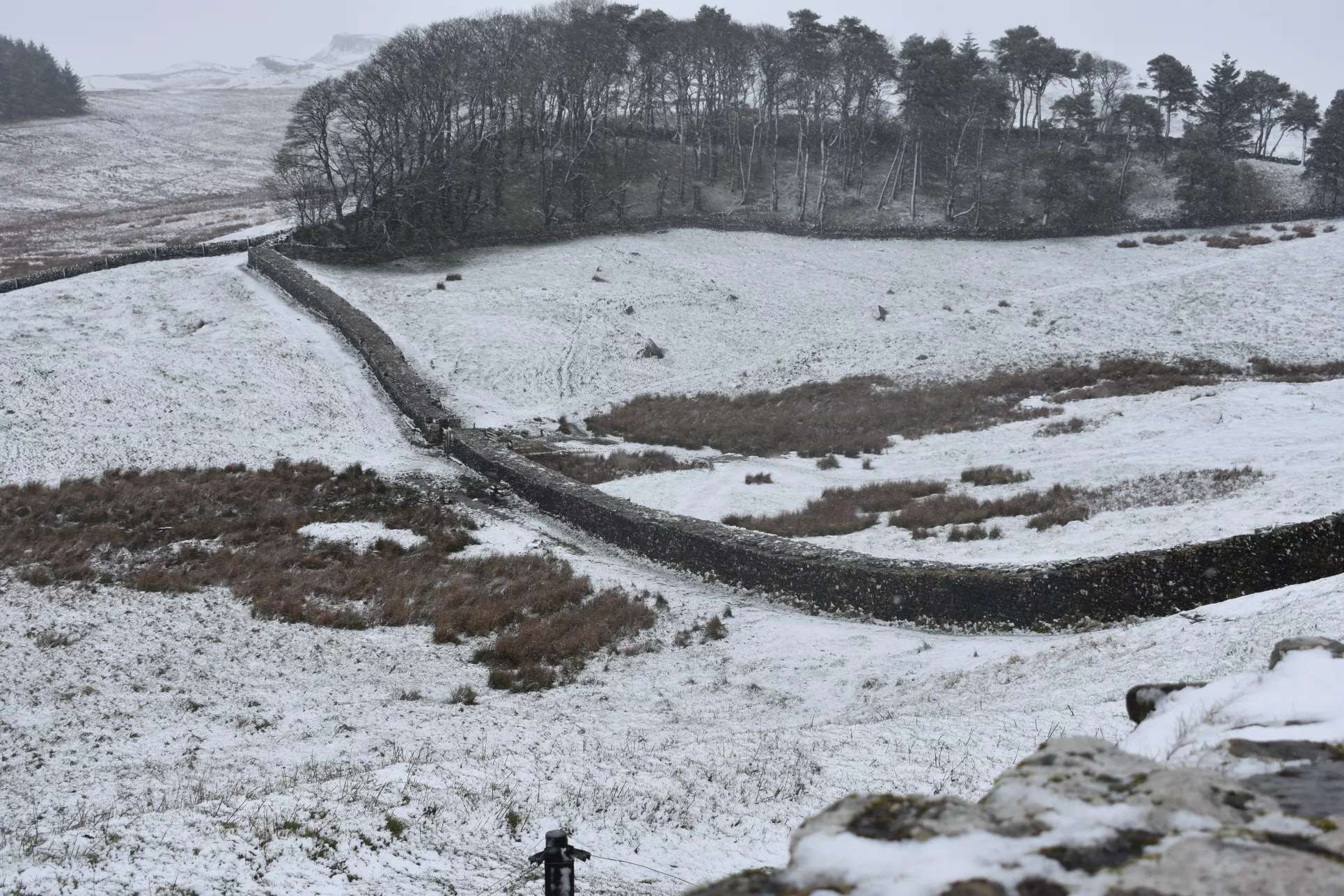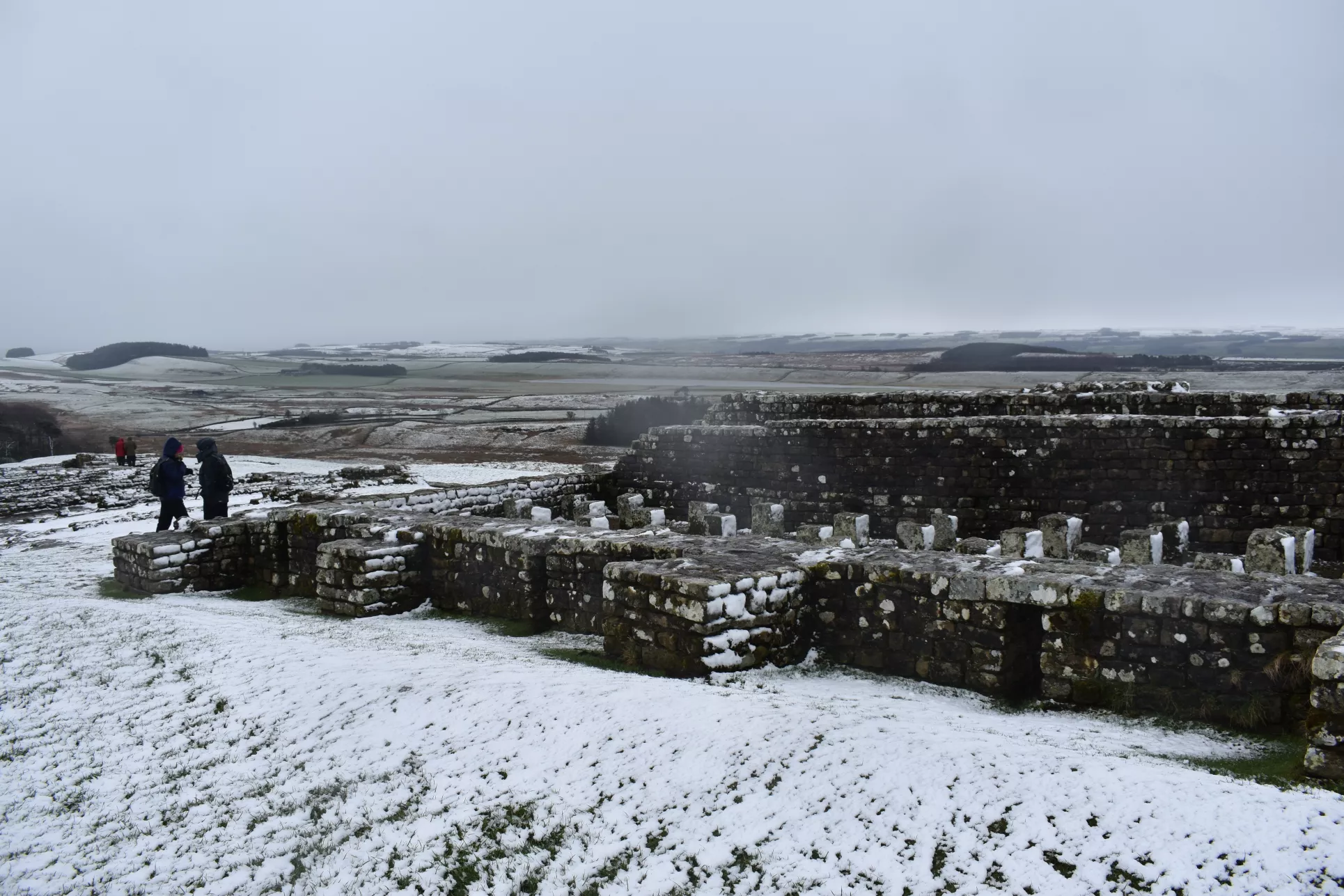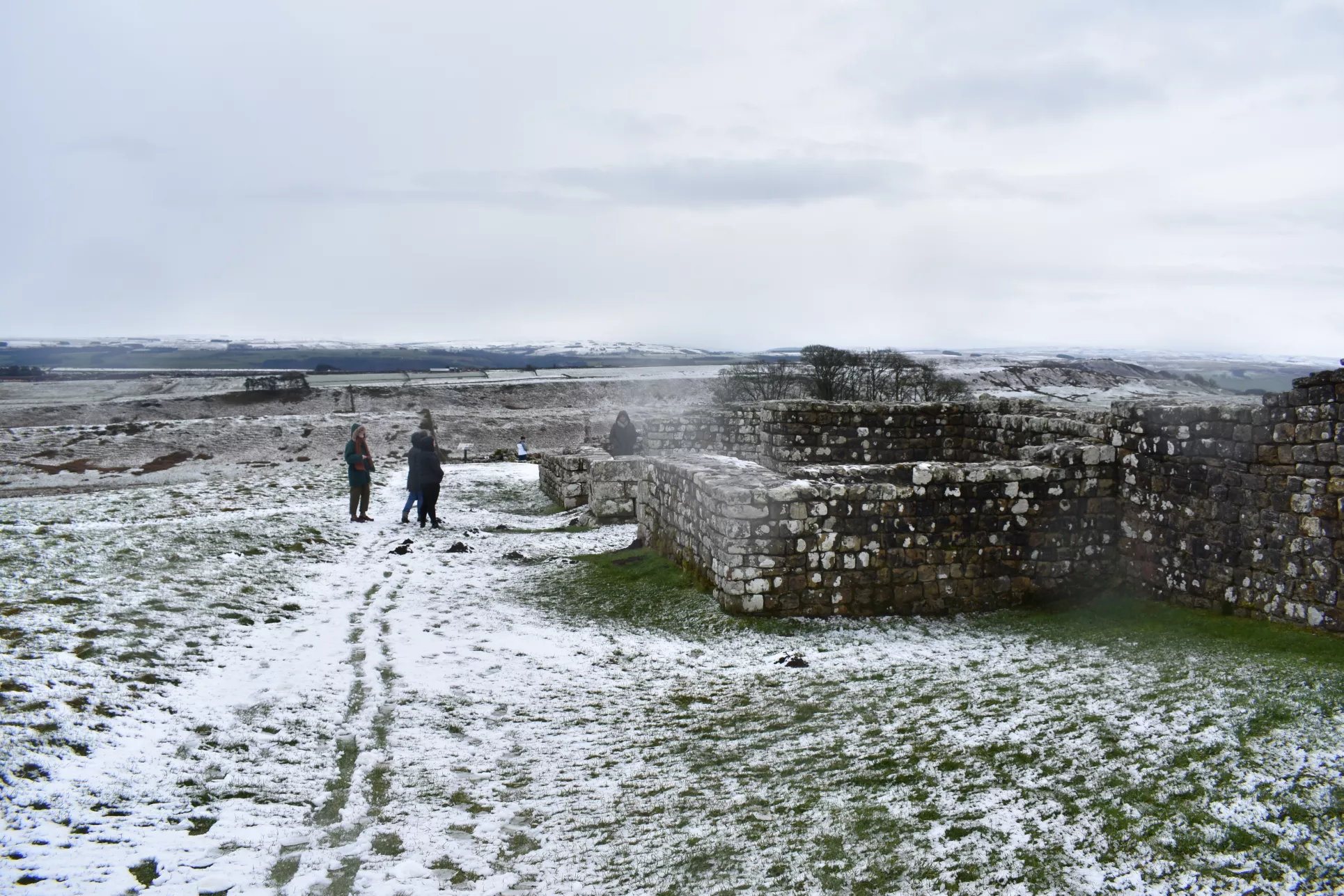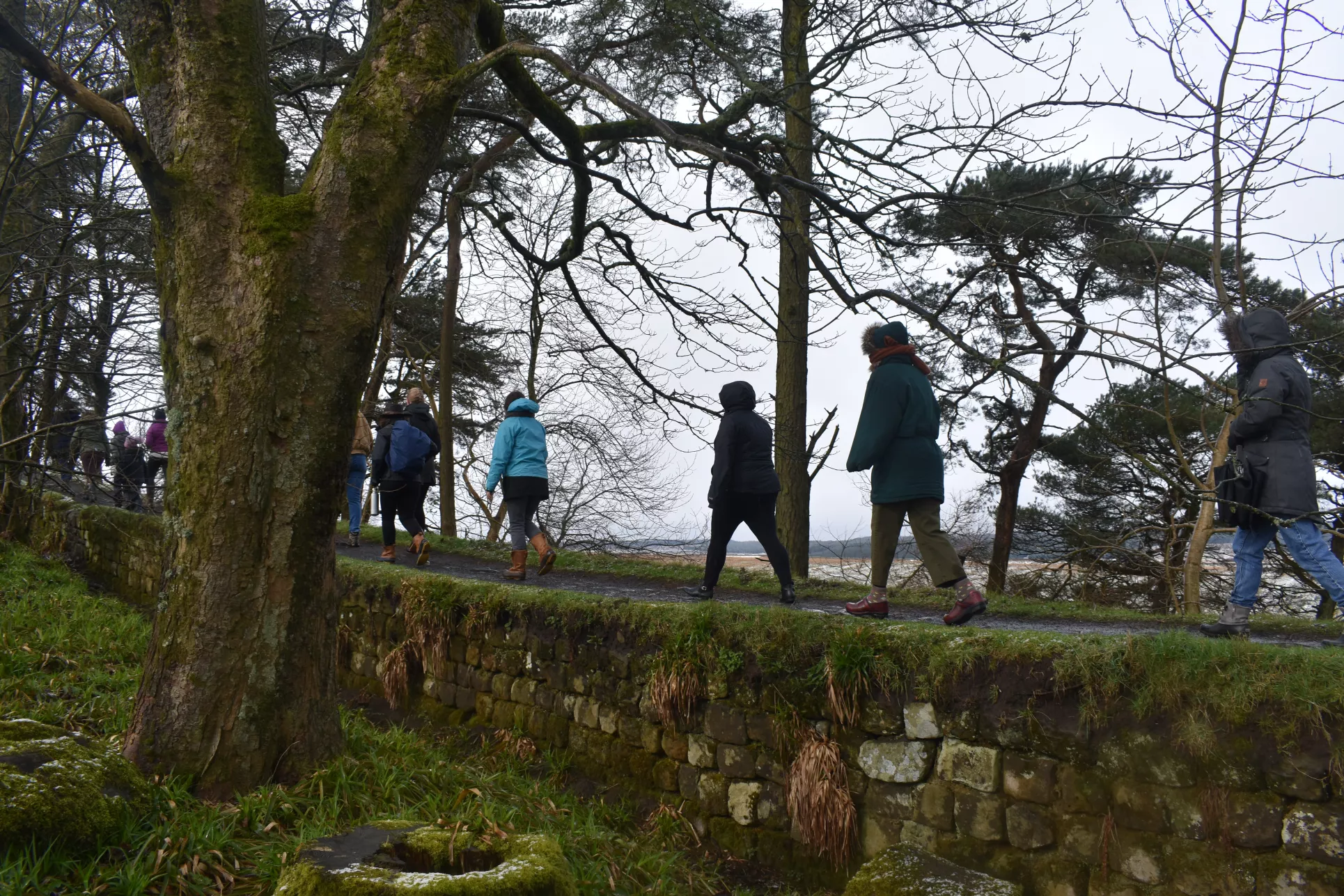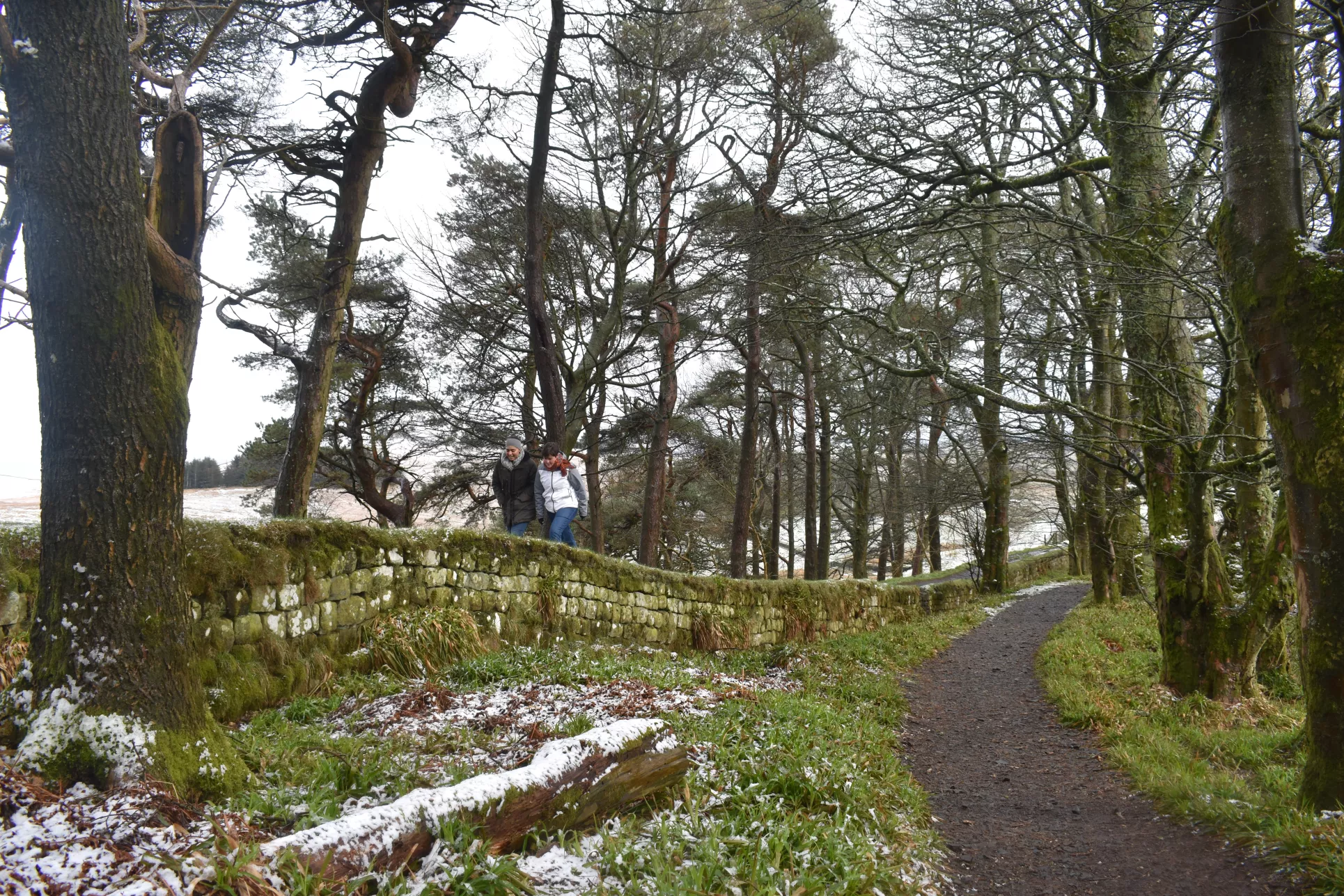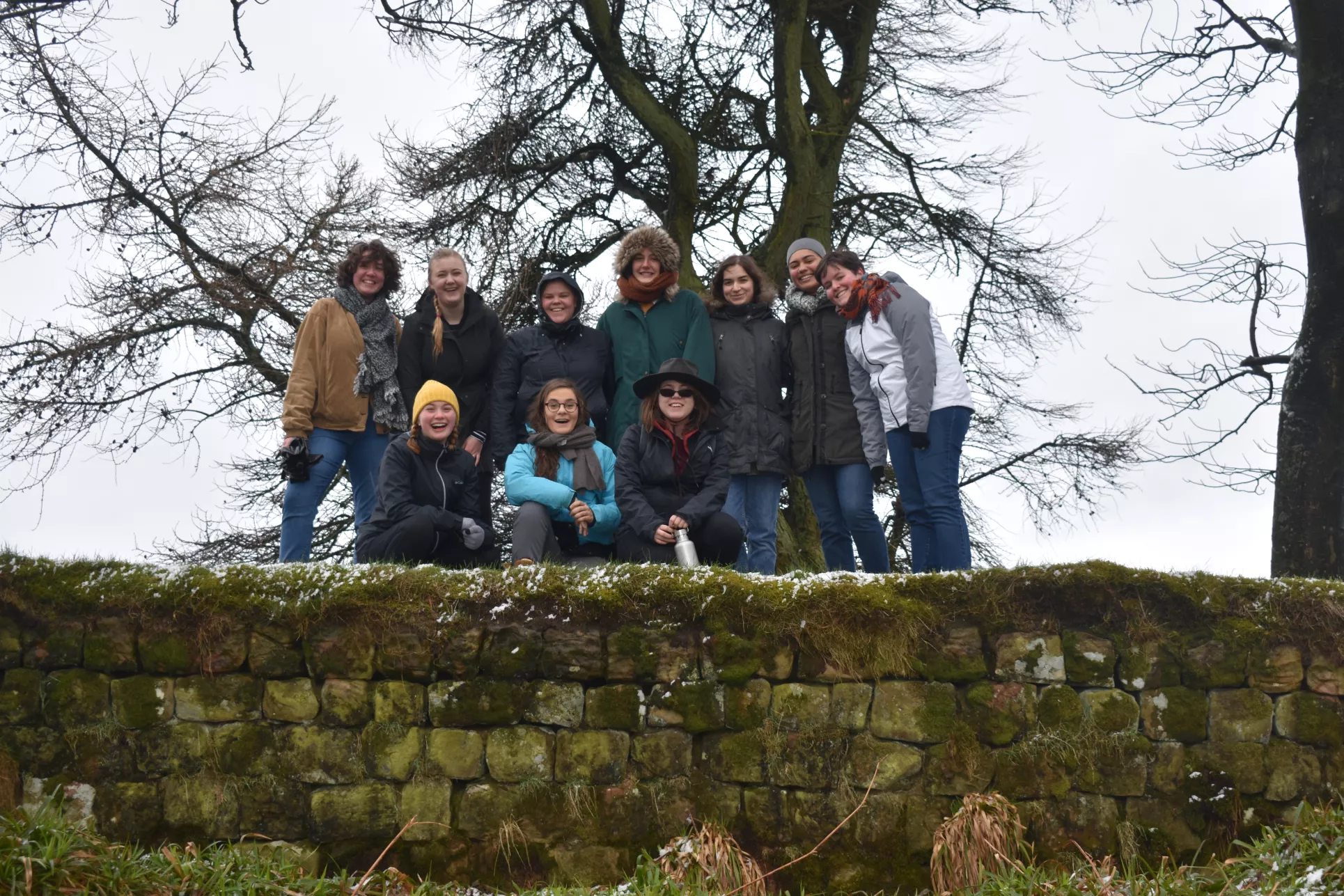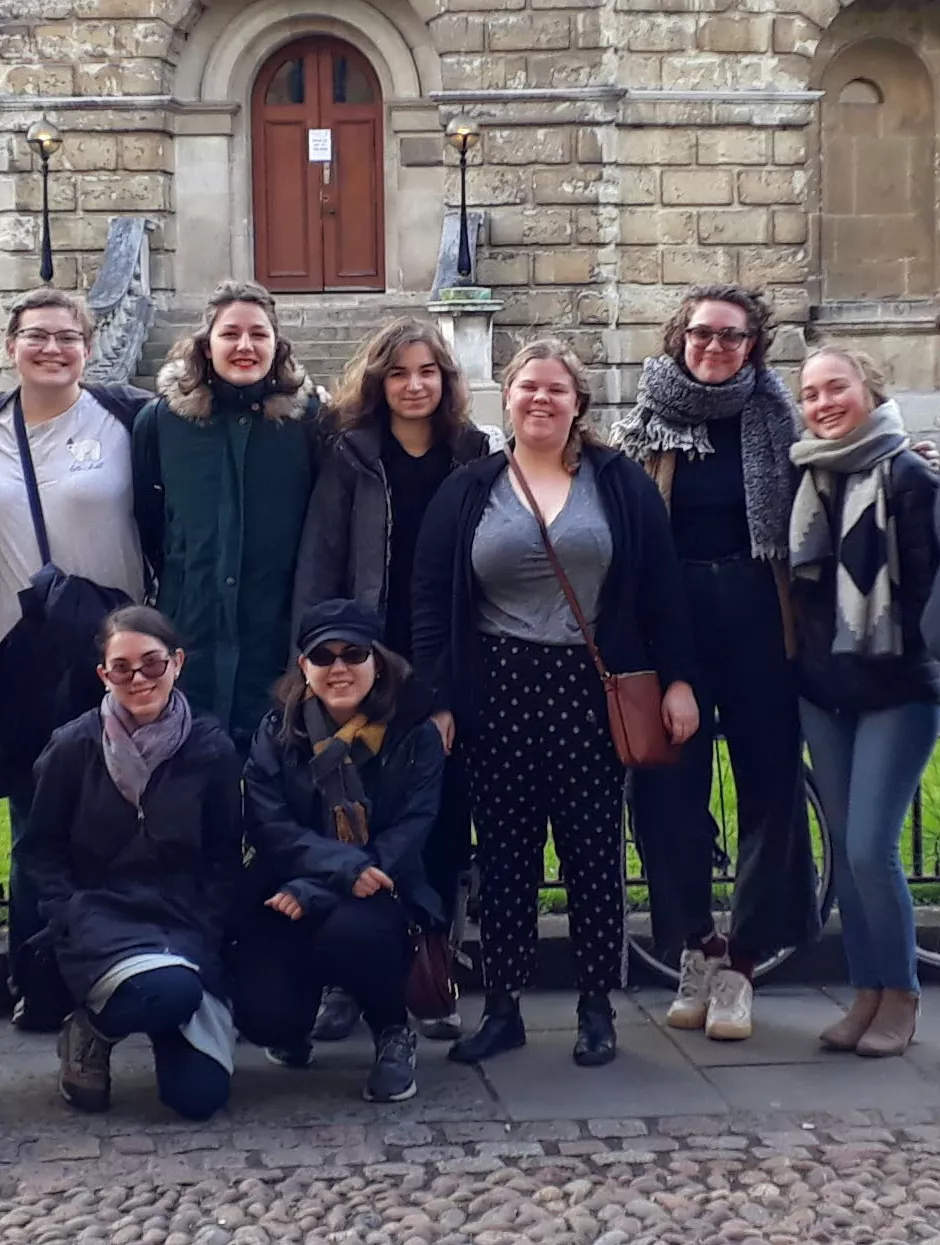
This March, 12 majors in the Classical and Near Eastern Archaeology Department at Bryn Mawr College traveled to the United Kingdom to visit archaeological sites and museums critical to their study of the ancient past. Ivana-Ajee Dolic ‘20, Leah Grama ‘20, Melody Gray ‘20, Alex Hagler ‘20, Maja Kleihs ‘20, Elizabeth McGuire ‘20, Alexis Pecknay ‘20, Emma Rutenberg ‘20, Alex Stern ‘20, Nikki Tindall ‘20, Clara Wright ‘20, and Ella Wright ‘20 were accompanied by Archaeology faculty members Jennie Bradbury and Susanna McFadden. The trip is part of a tradition in the Archaeology Department where majors in their junior year go abroad with faculty member(s) over Spring Break to engage with material culture in a dynamic way not possible in the classroom.
Over the course of the week the students visited archaeological sites, museums, and academic institutions; met with professionals in the field; and engaged with objects in a new setting. The first excursion was to Hadrian’s Wall, a stone and earthen construction that demarcated the northern extension of the Roman Empire. Students had the chance to walk along the wall and explore the fortress of Vindolanda and the Roman Army Museum. They traveled to Durham University where they were given a tour and took in the Durham Cathedral Open Treasure Exhibition and the Oriental Museum before having dinner with staff from the Durham University Archaeology Department. The remainder of the trip was spent in Oxford and London, where they visited the Ashmolean Museum and the British Museum respectively, two museums with important archaeological collections. They concluded the trip by participating in a hands-on workshop with the Endangered Archaeology in the Middle East and North Africa Project (EAMENA).
Ivana-Ajee Dolic discussed her experience:
What was your favorite part of the trip?
Visiting Hadrian’s Wall, that was wild. We went to two different sections including the fort of Vindolanda. It was great because we got to experience English weather and think about how it affected the people living there in the past. It was sunny and then hailing almost immediately after, and so we had the opportunity to think about what the people were wearing as they went about their daily lives. There are also museums along the wall. We would go to a site and then see the material culture displayed in the museum. We go to walk along the wall, and because it is built on a cliff, we could really see how dramatic the height was. It was such a great experience on our first full day there.
I also really enjoyed seeing the coins of Vespasian, Galba, and Otho, in the Ashmolean Museum. I wrote a paper about them, so it was fascinating to see the materials in real life and find out why there are so few of them (they are stored in the vault and not published yet).
How will this help you with your major/study of archaeology?
Visiting the museums and getting to engage with the material hands-on is very important. Seeing the objects in person gives a different perspective of the material, and I noticed this especially with the marble sculptures. It was also very clear how these really large colonial institutions [museums] prize these objects so highly. We discuss the colonialism inherent in early archaeological excavations in class, but it is hard to really understand the role museums played until you go there.
Why do you feel taking a trip like this a valuable experience?
It is just refreshing, once you actually see the objects you are studying it makes it feel a lot more concrete. It is good to know what we are doing in the classroom is actually real. This trip was outside of my personal area of study, but I am taking a lot of courses this semester that have to do with the Classical world. I am writing a paper on Hadrian’s wall and I feel like now I have a jump start. It was especially helpful to get to know the geography of the area.
What did you all do for fun?
Well, we visited the J.R.R. Tolkien pub! It was amazing experience, there was a placard with the inscription: “YOU SHALL NOT PASS without a beer.” It was where he would come and talk to his fellow authors while writing the books. We also visited a number of Harry Potter sites, we were there looking at the Roman influence on the architecture but also seeing where Harry Potter was filmed, it was so cool!
Join us for a screening of "Tangerines."
